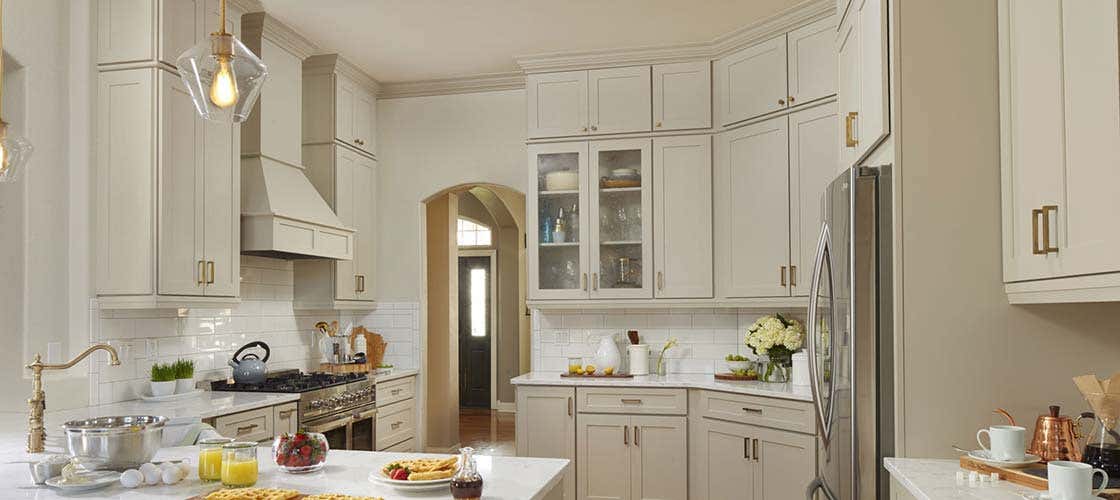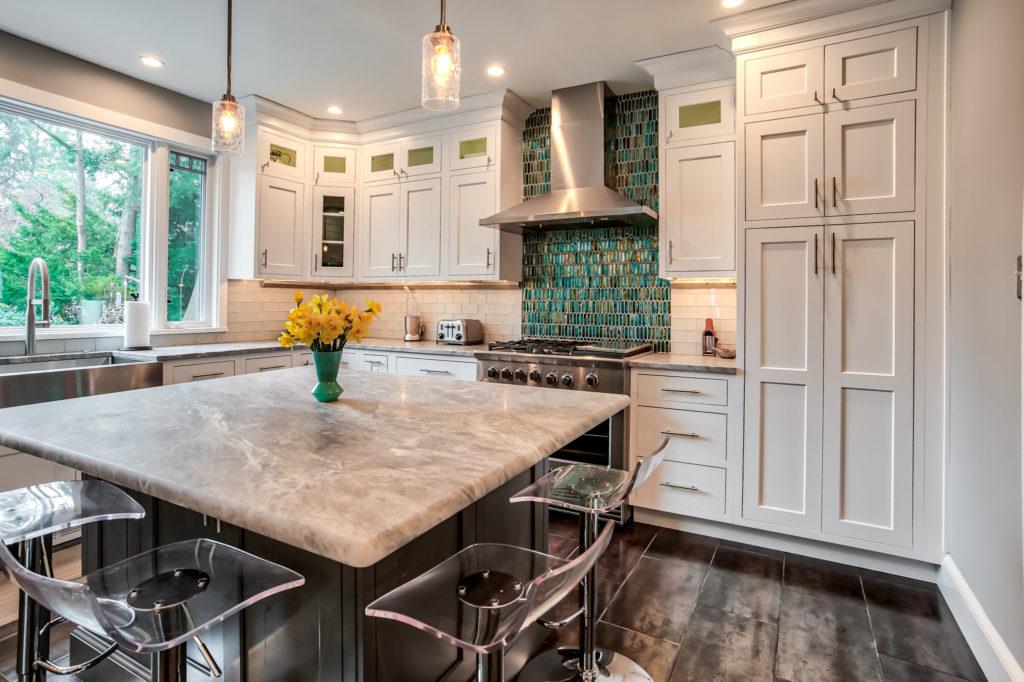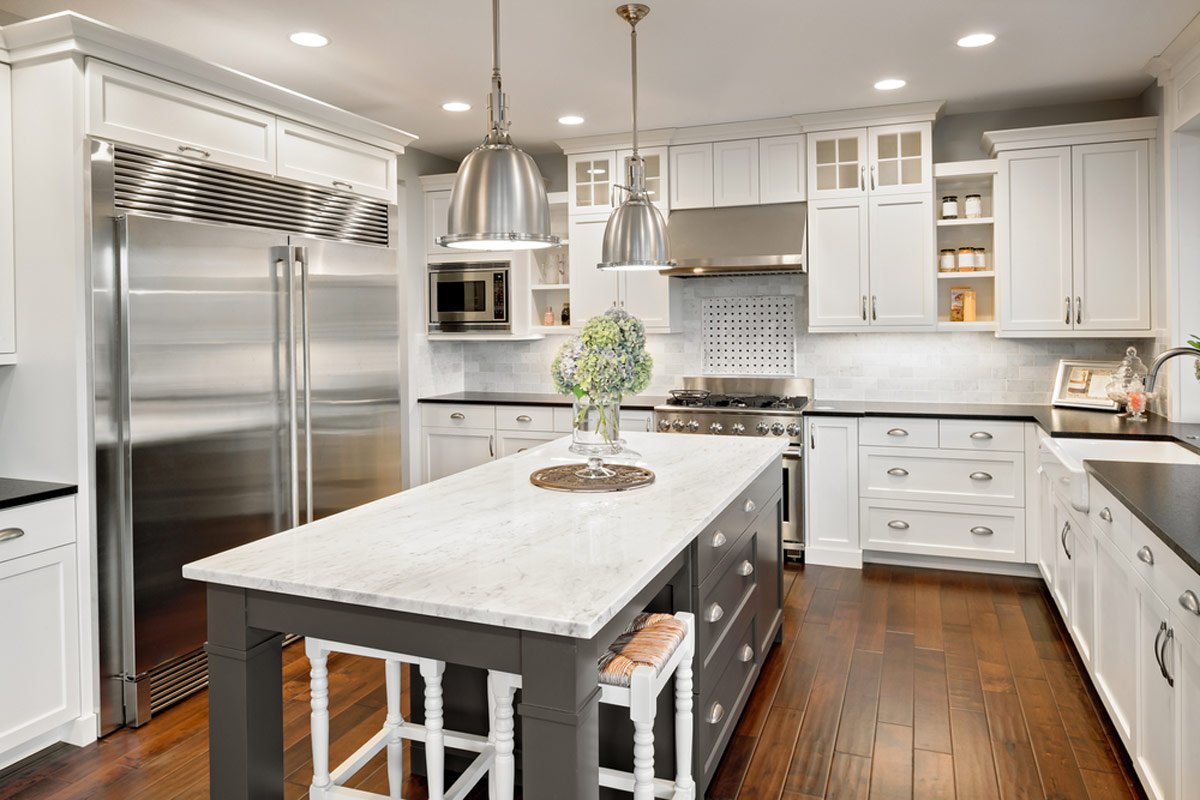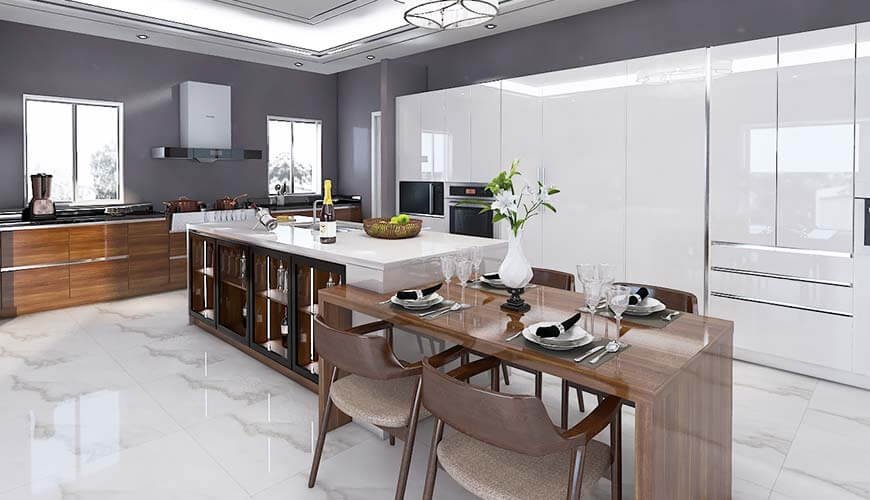Yes, kitchen cabinets can be expensive. Costs vary based on materials, design, and customization options.
Kitchen cabinets play a crucial role in both the functionality and aesthetic appeal of a kitchen. They come in various styles, materials, and finishes, impacting their overall cost. Custom cabinets, made to fit specific kitchen dimensions, tend to be more expensive than stock or semi-custom options.
High-quality materials like hardwood or stainless steel also drive up the price. Additionally, installation costs can add a significant amount to the final expense. Understanding your needs and budget helps in making an informed decision. Whether you choose custom, semi-custom, or stock cabinets, investing in quality ensures durability and long-term satisfaction.

Credit: www.cliqstudios.com
Table of Contents
ToggleFactors Influencing Costs
Are you wondering, “Are kitchen cabinets expensive?” The cost of kitchen cabinets can vary widely. Several factors influence these costs. Knowing these factors can help you budget better. Let’s explore the main factors influencing kitchen cabinet costs.
Material Choices
Material choice is a major cost driver. Different materials have different prices.
- Solid Wood: High quality, but expensive.
- Plywood: Durable and affordable.
- MDF: Less expensive, but less durable.
- Laminate: Budget-friendly, but limited styles.
Choosing the right material impacts both cost and longevity. Solid wood is a premium choice. MDF and laminate are more budget-friendly options.
Design And Style
The design and style also play a significant role. Custom designs cost more.
- Custom Cabinets: Tailored to your needs, but pricey.
- Semi-Custom Cabinets: Offer some customization at a lower cost.
- Stock Cabinets: Pre-made, most affordable option.
Custom cabinets offer unique styles. Stock cabinets are limited but cheaper. Semi-custom cabinets strike a balance.
Labor Costs
Labor costs can add up quickly. Installation complexity affects labor charges.
| Type | Cost |
|---|---|
| Basic Installation | Lower |
| Complex Installation | Higher |
Basic installations are straightforward. Complex designs require skilled labor. Skilled labor increases the overall cost. Always consider labor costs in your budget.

Material Options
Choosing the right material for your kitchen cabinets can impact both cost and durability. Explore various material options to find the one that fits your budget and style preferences. Below are some popular choices:
Solid Wood
Solid wood cabinets are a classic choice for many homeowners. They offer a timeless look and are highly durable. Common types of wood used include oak, maple, and cherry.
- Oak: Strong and durable with a prominent grain pattern.
- Maple: Smooth texture, lighter color, and less grain.
- Cherry: Rich color that darkens over time.
While solid wood is often more expensive, its longevity makes it a worthwhile investment.
Laminate
Laminate cabinets are a cost-effective alternative. They consist of a core material covered with a layer of plastic laminate. This option is budget-friendly and offers a wide range of colors and patterns.
| Advantages | Disadvantages |
|---|---|
| Affordable | Less durable |
| Easy to clean | Can chip or peel |
| Variety of designs | Not heat-resistant |
Laminate is an ideal choice for those seeking style on a budget.
Thermofoil
Thermofoil cabinets are made from MDF or engineered wood covered with a vinyl layer. They mimic the appearance of painted wood and are generally more affordable than solid wood.
- Cost-effective: Cheaper than solid wood or veneer.
- Low maintenance: Easy to clean and moisture-resistant.
- Variety: Available in many colors and styles.
While thermofoil is durable, it can be prone to heat damage. Avoid placing it near high-heat sources like ovens.
Custom Vs. Stock
Are kitchen cabinets expensive? The cost can vary based on your choice. You can choose between custom cabinets and stock cabinets. Each option has its own set of pros and cons. Understanding these differences can help you make an informed decision. Below, we explore the various types of cabinets available.
Custom Cabinets
Custom cabinets are tailored to fit your kitchen’s specific dimensions. They offer unique designs and finishes. These cabinets are made to order, giving you complete control over the materials and features.
Some benefits include:
- Perfect fit for any kitchen layout
- Wide range of materials and finishes
- Unique designs to match your style
Custom cabinets can be more expensive due to their bespoke nature. The cost depends on the materials and craftsmanship.
Stock Cabinets
Stock cabinets are pre-made and available in standard sizes. They are mass-produced and ready for quick installation. These cabinets are cost-effective and easily available.
Some benefits include:
- Lower cost compared to custom cabinets
- Quick delivery and installation
- Standard sizes that fit most kitchens
Stock cabinets offer fewer options for customization. They may not fit perfectly in unique kitchen layouts.
Semi-custom Options
Semi-custom cabinets offer a middle ground. They come in standard sizes but offer some customization options. You can choose different finishes, materials, and hardware.
Some benefits include:
- More affordable than custom cabinets
- More options than stock cabinets
- Flexible design choices
Semi-custom cabinets offer a balance between cost and customization. They provide a good compromise for many homeowners.
| Cabinet Type | Cost | Customization | Delivery Time |
|---|---|---|---|
| Custom | High | High | Long |
| Stock | Low | Low | Short |
| Semi-Custom | Medium | Medium | Medium |
Installation Costs
Installing kitchen cabinets can significantly impact the overall cost. This section explores the costs of DIY installation and hiring professionals. Understanding these costs can help you make an informed decision.
Diy Installation
Choosing to install your kitchen cabinets yourself can save you money. DIY installation might require some tools and materials, but it can be cost-effective.
- Tools: Basic hand tools, a drill, and a level.
- Materials: Screws, brackets, and possibly some adhesive.
Consider your skill level before starting. Inexperienced DIYers might face challenges, leading to potential mistakes. These mistakes can increase costs if you need professional help to fix them.
Here’s a simple breakdown of potential DIY costs:
| Item | Estimated Cost |
|---|---|
| Tools | $50 – $200 |
| Materials | $20 – $100 |
Hiring Professionals
Hiring professionals for kitchen cabinet installation ensures a seamless process. Professionals bring expertise and experience, which guarantees quality work.
The cost of hiring professionals can vary based on several factors:
- Project Size: Larger kitchens may cost more.
- Cabinet Type: Custom cabinets can be more expensive to install.
- Location: Installation costs can vary by region.
Professional installation typically costs between $100 and $300 per linear foot. This cost includes labor, tools, and materials.
Here’s a simple cost estimation for professional installation:
| Kitchen Size | Estimated Cost |
|---|---|
| Small (10 linear feet) | $1,000 – $3,000 |
| Medium (20 linear feet) | $2,000 – $6,000 |
| Large (30 linear feet) | $3,000 – $9,000 |
Professional installation offers peace of mind, ensuring your kitchen cabinets are installed correctly and efficiently.
Hidden Expenses
Are kitchen cabinets expensive? Many people think about the upfront cost. But there are hidden expenses that can catch you off guard. These costs can quickly add up, making your project more expensive than expected.
Hardware And Accessories
Choosing the right hardware and accessories is crucial. These small items can dramatically change the look of your cabinets. High-quality knobs, handles, and pulls can be pricey. They might cost between $5 to $50 each. If you need 20 handles, that’s up to $1,000! Sometimes you also need special hinges and drawer slides. These can add another $200 to $300 to your budget. So, always check the prices of hardware and accessories before buying.
Delivery Fees
Many people forget about delivery fees. These costs can surprise you at checkout. Delivery fees depend on the size and weight of your cabinets. They can range from $50 to $500. If you order custom cabinets, expect higher fees. Sometimes, companies offer free delivery for large orders. But always read the fine print to avoid surprises.
Pre-installation Preparations
Pre-installation preparations can be another hidden cost. You might need to remove old cabinets. This can cost between $300 to $1,000. Also, your walls might need repairs before new cabinets can be installed. Wall repairs can cost another $200 to $500. You might also need to adjust plumbing or electrical outlets. These adjustments can add $100 to $400 to your project. All these small tasks can add up quickly.
By knowing these hidden expenses, you can budget better. Always plan for these extra costs to avoid surprises.
Budgeting Tips
Are you worried about the cost of kitchen cabinets? Don’t fret! With careful planning and smart choices, you can have beautiful cabinets without breaking the bank. Here are some budgeting tips to help you manage your expenses effectively.
Cost-saving Strategies
There are many ways to save on kitchen cabinets. Follow these tips to keep your costs down:
- Consider RTA (Ready-to-Assemble) cabinets. They are cheaper and easy to install.
- Choose stock cabinets over custom ones. They come in standard sizes and are less expensive.
- Opt for laminate or thermofoil finishes. They are budget-friendly and look great.
- Shop during sales or clearance events. You can find good deals on quality cabinets.
- Refinish or repaint existing cabinets. It gives them a new look without a high cost.
Financing Options
If you’re short on cash, consider these financing options to fund your kitchen cabinets:
| Option | Description |
|---|---|
| Credit Cards | Use a credit card with low interest rates or special offers. |
| Home Equity Loans | Borrow against your home equity. This can have lower interest rates. |
| Personal Loans | Get a personal loan from your bank. Look for competitive rates. |
| Store Financing | Many stores offer financing plans. Check for 0% interest deals. |
Prioritizing Needs
Set priorities to avoid overspending. Here’s how you can do it:
- List your must-haves. Focus on essential features first.
- Evaluate materials. Choose durable but affordable materials.
- Limit customization. Custom features add cost. Stick to standard options.
- Consider DIY installation. Save money by installing cabinets yourself.
- Plan for the future. Invest in quality to avoid frequent replacements.
Quality Vs. Price
When deciding on kitchen cabinets, many people worry about cost. The balance between quality and price is a common concern. Some cabinets are cheap but may not last. Others are costly but offer superior quality. How can you make the best choice?
Durability Considerations
Durability is a key factor. High-quality materials last longer. Solid wood or plywood cabinets are more durable than particleboard. These materials resist wear and tear. They can handle heavy use over time.
Construction methods also matter. Dovetail joints and full-extension slides add strength. They make cabinets more robust. Poor construction can cause cabinets to break. Pay attention to how the cabinets are made.
Long-term Value
Think about the long-term value. Quality cabinets may cost more upfront. But they save money in the long run. You won’t need to replace them often. They can last for decades.
Quality cabinets can also increase your home’s resale value. Buyers appreciate well-made kitchens. They are willing to pay more for them. Investing in quality cabinets can be a smart move.
Consider the warranty. Quality cabinets often come with better warranties. This can give peace of mind. You know your investment is protected.
:strip_icc()/angled-kitchen-patterned-porcelain-tile-4xfxsxA74giBzU0GeCaLt9-120959609c1b4d6ebf967de6e4ef5320.jpg)
Real-life Examples
Are kitchen cabinets expensive? The answer depends on many factors. Here are real-life examples to help you understand the costs. From budget-friendly renovations to luxury upgrades, we break down the expenses.
Case Study: Budget Renovation
Meet Sarah. She renovated her kitchen on a tight budget. She chose stock cabinets from a local store. Here are the details:
| Item | Cost |
|---|---|
| Stock Cabinets | $2,000 |
| Installation | $1,500 |
| Hardware | $200 |
Sarah saved money by doing some work herself. She painted the cabinets and added new hardware. This DIY approach lowered her costs.
Case Study: Luxury Upgrade
Now, let’s look at John. He wanted a luxury kitchen. He opted for custom cabinets with high-end finishes. Here are his expenses:
| Item | Cost |
|---|---|
| Custom Cabinets | $25,000 |
| Installation | $5,000 |
| Hardware | $1,000 |
John chose premium materials like solid wood and soft-close drawers. He also hired professionals for the installation. This added to the overall cost.
Frequently Asked Questions
How Much Do Kitchen Cabinets Cost?
The cost varies widely, ranging from $100 to $1,200 per linear foot depending on materials and customization.
Are Custom Cabinets More Expensive?
Yes, custom cabinets are typically more expensive than stock or semi-custom options due to bespoke design and materials.
What Affects Kitchen Cabinet Pricing?
Several factors affect pricing, including material, design complexity, finishes, and labor costs.
Are Stock Cabinets Cheaper?
Yes, stock cabinets are generally cheaper than custom or semi-custom cabinets and are mass-produced.
Can I Save Money On Cabinets?
You can save by choosing stock cabinets, less expensive materials, or opting for a DIY installation.
Do Cabinet Materials Impact Cost?
Absolutely, materials like solid wood are more expensive than MDF or particleboard.
How Long Do Cabinets Last?
Quality cabinets can last 15 to 20 years or more with proper care and maintenance.
Are Semi-custom Cabinets A Good Option?
Semi-custom cabinets offer a balance between cost and customization, making them a popular choice.
Is Cabinet Refacing Cost-effective?
Refacing is often cheaper than replacing cabinets and can give your kitchen a fresh look.
What’s The Cost Of Installation?
Installation costs vary but can range from $50 to $250 per cabinet, depending on complexity and location.
Conclusion
The cost of kitchen cabinets varies based on material, design, and customization. Budget options exist, but high-end choices can be pricey. Always consider your needs and budget before deciding. Investing in quality cabinets can enhance your kitchen’s value and functionality, making it a worthwhile expenditure.


